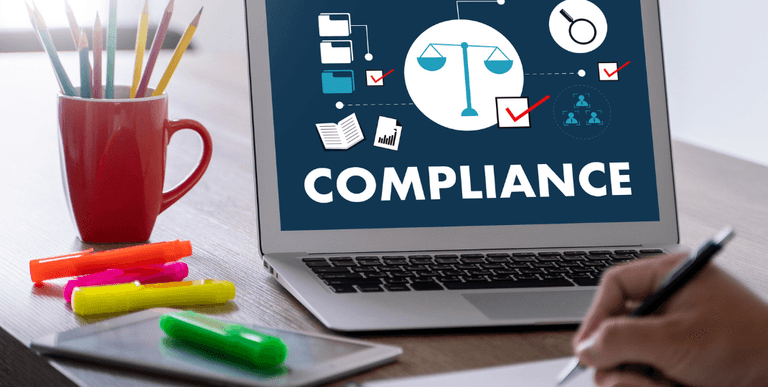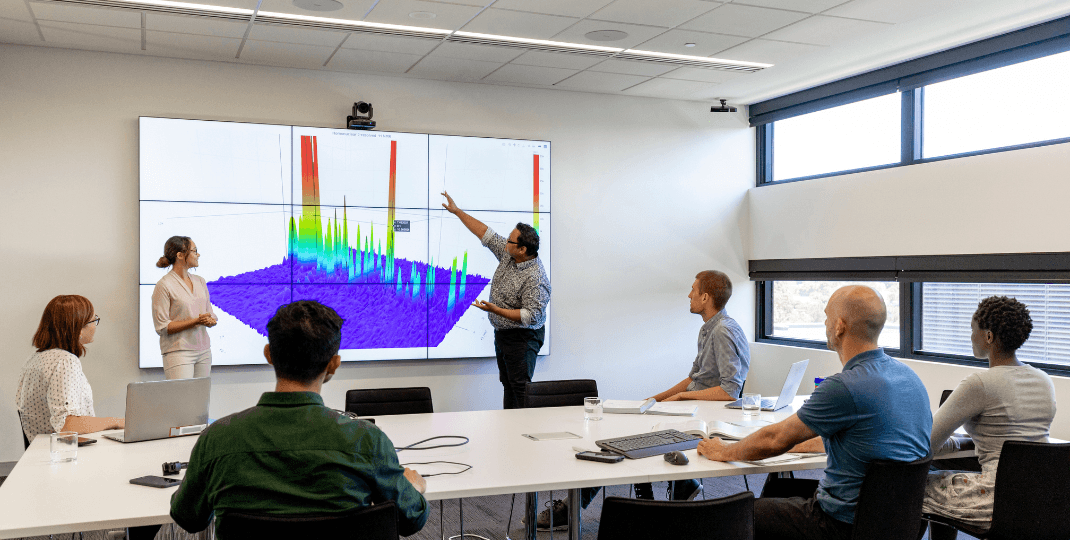Project evaluation and review technique is one of the most effective means of gathering feedback and ensuring positive resultsfor any project. Project Evaluation and Review Technique (PERT) is a project management tool used to plan, coordinate, and track specific tasks within the given timeline of a project. PERT analyzes the tasks of a project in order to identify inter-dependencies and set appropriate time frames for completion.
It is used to create a project diagram or what’s more commonly known as a Project Network Diagram. This diagram displays arrows connecting tasks and provides valuable insight into how long a project will take, what tasks are dependent on other tasks, and what tasks constitute the critical path of the project.
It can also provide an overview of potential problem areas by highlighting slow-completing tasks and tasks prone to delays. Additionally, PERT can be used to calculate the expected duration of a project based on the estimated time each task may take.
By accurately predicting the amount of time needed to complete a project, project managers can better inform their stakeholders and make better decisions that lead to successful projects.
Here a list with the most important Project Evaluation Methods:

1. Expert reviews
Expert reviews are assessments written by professionals or experts in a particular field; these reviews are meant to inform the consumer of an object, product or service that may be complex and difficult to understand, such as technology and electronics. Expert reviews are usually more detailed and objective than consumer reviews, because they have knowledge of all the technical features of the product and can conduct tests to confirm their performance.

2. Cost-benefit analysis
Cost-benefit analysis is a method of evaluating a project or decision, in which the potential costs and benefits are evaluated and compared. It helps to determine whether the overall benefit of a project or decision outweighs the associated costs, and can be used to decide whether the project or decision is worth carrying out.

3. ROI analysis
ROI stands for Return on Investment. It is a performance measure used to evaluate the efficiency of an investment or to compare the efficiency of a number of different investments. ROI analysis is an analysis done by businesses to determine the return on their investments. It is used to measure how much profit a business is able to generate from its investments and how much money it gains in comparison to how much it spends.
4. Qualitative Risk Analysis
Qualitative risk analysis is a process of analyzing a set of risks and determining their relative level of importance. It is used to prioritize risks and identify which ones should be handled first. This process involves identifying the type of risk, its impact, and the likelihood of it occurring. This information can then be used to determine which risks should receive the most attention and resources. Qualitative risk analysis is often employed alongside quantitative risk analysis to provide a comprehensive view of a given situation.
5. Quantitative Risk Analysis
Quantitative Risk Analysis is a process used to measure and assess risk in terms of its numerical impact on a project. This includes assessing the likelihood of a risk, the impact it could have, and how it can be mitigated or managed in order to reduce the associated risks. Quantitative Risk Analysis helps identify high-risk elements of the project and allows resources to be allocated and managed accordingly. It provides an overall picture of the risks associated with the project, helping to ensure that those which pose the most significant threats are addressed first.

6. Stakeholder Interviews
Stakeholder interviews are a method of understanding the perspectives, expectations, and needs of people involved in a project or program. This can include executives, customers, employees, or vendors. The goal of stakeholder interviews is to identify how different stakeholders view the objectives, strategies, and outcomes of a project.
Stakeholder interviews can be conducted face-to-face, by phone, or even through online surveys. This data can then be used to inform decision-making, develop an effective strategy, and ensure that all stakeholders feel they have been heard and their ideas taken into consideration.
7. Process Evaluation
Process evaluation is an evaluation process used to assess the effectiveness of a program, project, or policy in meeting its objectives. It typically involves gathering information and data throughout the program cycle to assess the quality of implementation, analyze feedback from stakeholders, identify areas for improvement, and measure progress against objectives.
It can help organizations identify areas where they are successful and identify opportunities to optimize processes and increase efficiency. Process evaluation can also provide feedback that can be used to make informed decisions about the program and to inform future planning.

8. Usability Testing
Usability testing is a process used to evaluate how easy it is for users to interact with a website, application, product, or service. The goal of usability testing is to identify any usability issues that exist with the product, then determine how these issues can be improved.
Usability testing typically involves recruiting users to test the product, observing them as they use it, and collecting feedback from the users on their experience. This feedback can help inform decisions about future design and development of the product.
9. Systematic Reviews
Systematic reviews are a type of research that involve collecting and critically analyzing existing research on a given topic. The goal of this type of research is to provide an overview of the current body of research and provide evidence-based conclusions about a particular topic. Systematic reviews are conducted in a systematic and transparent way, so that the results are as free from bias as possible. Systematic reviews involve searching for, selecting, appraising, and synthesizing all available relevant research (e.g. primary and/or secondary sources).
Depending on the scope of the review, factors such as study design, participants, interventions/therapies, outcomes, and conclusions are considered. Systematic reviews can be qualitative or quantitative and use a variety of analytic approaches (e.g. meta-analysis, narrative synthesis, meta-ethnography). Systematic reviews can play an important role in informing practice and policy, and are seen as the gold standard for evidence-based practice.

Protocols for Management and Compliance :

1. Develop and enforce policies and procedures:
Establish clear policies and procedures for compliance and management, including the implementation of internal controls. Ensure that all employees are aware of the organization’s compliance standards, and regularly review and update them as needed to ensure that all stakeholders understand their obligations.

2. Educate and train staff:
Provide a thorough and ongoing education and training program for staff in compliance standards and practices. Ensure that staff are familiar with the organization's code of conduct and policies, and review and discuss changes in applicable regulations or guidelines in order to maintain updated knowledge.

3. Communicate and document compliance issues:
Create a process for documenting and communicating compliance issues. Establish a system for recording and analyzing complaints, auditing processes, and ensuring corrective actions are implemented when necessary. Document all investigations and findings, and keep records of computer-related activities and suspicious financial transactions.

4. Monitor activities:
Monitor and audit activities to ensure that all processes are in compliance with applicable regulations and standards. Establish key performance indicators (KPIs) to track progress and identify areas where additional monitoring may be necessary.

5. Implement risk management controls:
Implement internal controls and risk management protocols to help protect against losses and compliance violations. Consider implementing a monitoring system to detect suspicious activity and a system for responding to breaches.

6. Take corrective action:
Develop a process for investigation of compliance issues and taking corrective action. Investigate potential violations and take appropriate disciplinary measures if necessary. Ensure staff who violate rules or regulations are held accountable.
Task Analysis Example
Task: Learning to ride a bicycle
1. Prepare the bicycle:
Adjust seat height and handlebar height, check brakes and air in tires.
2. Teach the basics:
Describe the parts of the bike (pedals, handlebar, brakes, etc.) and explain how they work.
3. Start with balance:
Have the learner practice balancing on the bike without pedaling.
4. Introduce pedaling:
Once the learner is comfortable with balance, teach them how to pedal while continuing to balance.
5. Teach the brakes:
Explain how to use the brakes and demonstrate how to stop properly.
6. Riding practice:
Let the learner practice riding and braking in an area free from obstructions.
7. Advanced skills:
Once the learner is comfortable with basic riding, teach them more advanced skills such as turning, shifting gears, and using hand signals.
Document Analysis
Document analysis is an approach to understanding written texts by examining the content and context of a document. It is used for many different purposes such as literary analysis, historical research, linguistic analysis, and legal analysis.
Document analysis involves analyzing a variety of documents, including letters, reports, memos, emails, notes, journals, diaries, newspaper articles, magazines, and books. The purpose of the analysis is to determine how the document was created, who created it, and why it was created.
Document analysis can reveal a great deal of information about the document's author, the topic of the document, its purpose, and the time period in which it was created. Document analysis allows scholars to gain a better understanding of how a particular document fits into a larger historical narrative or literary work.

Portfolio Analysis
Portfolio analysis is the process of evaluating a portfolio of investments to determine its overall performance and risk. This analysis involves evaluating the current and past performance of the investments, assessing their expected future returns, and understanding the associated risks.
The goal of portfolio analysis is to analyze the portfolio and make adjustments to achieve the desired level of return within acceptable levels of risk. This analysis can be done through a variety of methods such as modern portfolio theory, quantitative analysis, mean-variance optimization, and more.
Investment professionals use portfolio analysis to evaluate and manage their portfolios in order to maximize return and minimize risk.
Benchmarking
Benchmarking is a process used to compare the performance of one organization or system against another that has achieved recognized success in order to identify best practices and areas for improvement.
It is often used by organizations to measure their performance in relation to competitors and to track progress towards organizational goals. Benchmarking can be applied to any area of an organization, including finance, operations, customer service, IT, research and development, product quality, human resources, and marketing.
Surveys
Surveys are a means to collect data on a specific topic. They are usually conducted either online or in-person, and may consist of answering questions, taking pictures, or providing feedback. Surveys are often used to gain insight into customer satisfaction, behaviors, preferences, and opinions.
They provide a way to assess customer sentiment and measure the quality of a product or service. Survey results can also be used to identify areas for improvement and make informed decisions about future investments.

Focus Groups
Focus groups are small, semi-structured group discussions conducted for the purpose of gathering opinions and perspectives on a particular topic or issue. They are primarily used in market research and qualitative research studies, but can also be used to gain insights into other areas, such as customer service and employee engagement.
Focus groups consist of an interviewer or moderator and generally 6 to 12 carefully chosen participants. The moderator guides the discussion and encourages open dialogue, while participants discuss their ideas, opinions and experiences. Focus groups provide in-depth, detailed insights that can’t be uncovered through surveys or interviews.
Organizational Impact Analysis
Organizational impact analysis is a process used to assess the potential impact of a proposed change or set of changes on an organization. It is intended to examine how a change might affect the way work is done and how it could potentially benefit the organization. This type of analysis also helps to identify potential risks associated with the implementation of the proposed change, as well as areas that need to be addressed to ensure successful implementation.
By examining both the positive and negative impacts of the proposed change, organizations can make informed decisions that best meet their goals and objectives.

Cultural Fit Analysis
Cultural fit analysis is the process of assessing an individual's personality, values and beliefs against the company's culture in order to determine if they are the right person for a certain role within the organization. This type of analysis is usually done as part of the recruitment process in order to ensure that the new hire or potential candidate is compatible with the team, department, and/or company culture.
The goal is to make sure that the individual is a good fit with the existing culture in order to maximize productivity, engagement, and job satisfaction. This type of analysis typically involves conducting interviews, surveys, and assessments in order to learn more about the individual's values, motivations, and goals. Additionally, it can involve conducting research into the company's culture in order to acquire a better understanding of what it is like to work there.
Gap Analysis
Gap analysis is a method for analyzing a company's performance relative to industry, competitors, and its own goals. It can help identify areas of improvement and potential opportunities for growth or expansion.
Gap analysis is used to compare aspects of the company's internal operations, such as resources, processes, and capabilities, with external factors, such as market trends, competitor strategies, and customer needs. By identifying gaps in business performance, a company can develop better strategies and tactics to close the gap and improve. Gap analysis can also help identify areas of potential cost savings, by assessing the efficiency and effectiveness of current processes.

Data Mining
Data mining is the process of analyzing a large volume of data in order to extract meaningful information and insights. It involves the use of advanced techniques such as machine learning, natural language processing, and predictive analytics to uncover patterns, trends, and correlations in datasets. Data mining is used in a variety of industries and applications, including healthcare, finance, marketing, and e-commerce.
Synthesis Capital can help you access a range of capital resources, such as venture capital and angel investors, to help fund and grow your business. Furthermore, Synthesis Capital’s network of industry experts can provide advice and guidance on how to navigate the startup scene in London, as well as direct introductions to potential partners, customers, and suppliers.
Finally, Synthesis Capital’s experienced professionals can provide invaluable support in helping you find suitable funding, develop your business plan, and create a solid investor pitch.